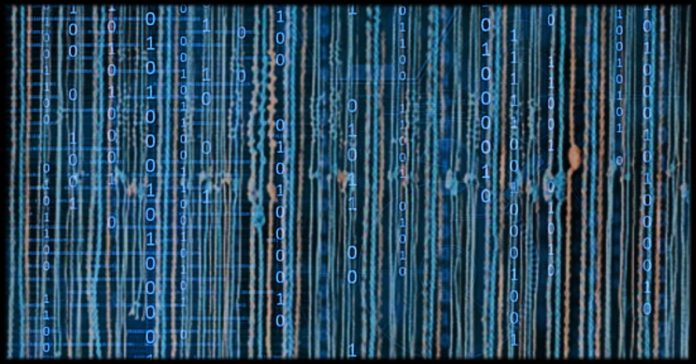The ancient quipu, a system of knotted cords developed by the Inca civilization, served as a method for recording numerical data and possibly narrative content like messages or traditions. This tool enabled the Incas to administer a vast empire without a written language, using knots, cord arrangements, and colors to encode information. Primarily used to track tributes, populations, and resources, quipus may have also recorded royal orders or historical events, with recent studies suggesting additional complexity. This article covers the quipu’s structure, numerical and potential narrative functions, historical context, a specific case study, cultural significance, interpretive challenges, and insights from the Harvard Khipu Database.
Structure and Design of the Quipu
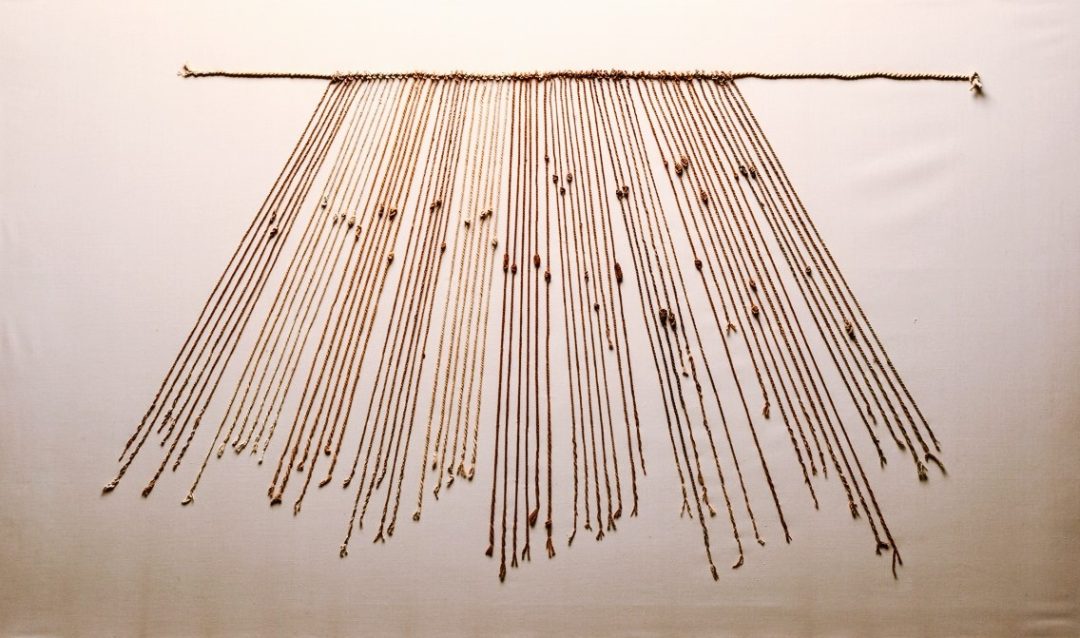
The quipu consists of a main cord, typically made of cotton or wool, varying from a few centimeters to over a meter in length. Attached to this cord are pendent strands, often numbering from a few to over a hundred, each usually under half a meter long. These strands are crafted by spinning a cord, doubling it to form a loop, and twisting the strands together, often with a knot at the end to secure them. The pendent cords attach to the main cord by passing the free end through the loop and pulling it taut, creating a secure connection. In some cases, smaller subsidiary cords are tied to the pendent strands to record additional data.
Knots on the pendent cords, tied at varying distances from the main cord, form the core of the encoding system. The system uses a decimal structure: a single knot farthest from the main cord signifies one unit, while knots closer to the main cord represent tens, hundreds, or higher powers of ten, never exceeding nine knots per group. Long knots, formed by coiling the cord multiple times, indicate repeated units, such as four turns for four units. Colors like red for war or yellow for gold may carry symbolic meaning, though their significance varies by context. Historical accounts suggest that knot patterns or colors could represent narrative elements, adding depth to the quipu’s design.
Numerical Recording System
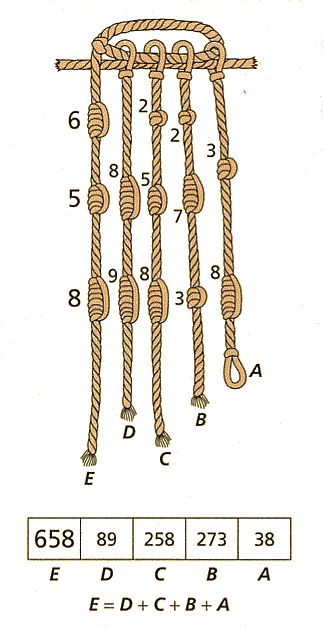
The quipu functioned primarily as a numerical record, not a tool for calculation or counting. It tracked data such as tribute payments, population counts, or resource inventories using a decimal system. Knots farthest from the main cord represent units (1–9), while those in subsequent rows signify tens, hundreds, or higher powers of ten, never exceeding nine knots per group. Long knots, formed by coiling the cord multiple times, denote repeated units; for example, a knot with four turns represents four units. This decimal structure, recognized as one of the earliest portable notations in the Western world, enabled precise data management.
The Inca’s Quechua language included a complete and adequate numeration system, making the quipu unnecessary for active counting but essential for preserving records. A top cord, often passed through the top loops of grouped pendent cords, sums the numbers on those cords, providing an accurate key to their numerical character. Some difficulty arises in reading long knots due to cord degradation, but the system supported the administration of resources across regions like modern-day Peru, Bolivia, and beyond.
Potential Narrative Functions
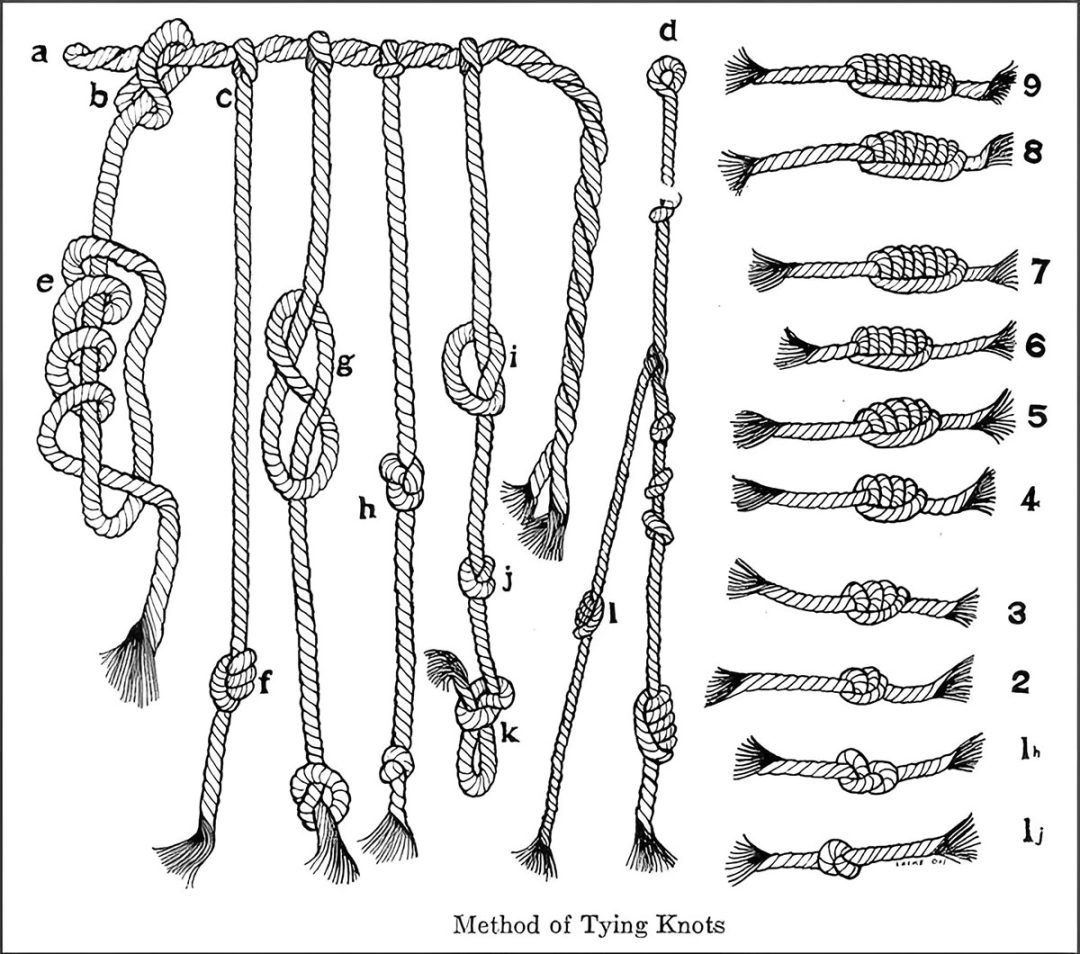
Spanish chroniclers after the conquest reported that quipus recorded more than numbers, including royal orders, orations, poems, traditions, and historical data. Some accounts propose that specific knot patterns, modes of tying, groupings, cord colors, twisting of strands, and distances from the main cord might have conveyed ideas, functioning as a form of communication beyond numerals. For instance, certain configurations could serve as mnemonic aids for messages, though no surviving quipus confirm this interpretation.
The arrangement of knots, their distances from the main cord, and the use of colors raise questions about whether these elements carried specific meanings, similar to rosary beads. Nearly all writers on Peruvian history and archaeology, from the conquest onward, have detailed this practice, with Garcilasso de la Vega providing a reliable firsthand account. While numerical quipus show clear decimal patterns, the absence of preserved “historical” quipus leaves the idea of communicative use speculative.
Historical Background and Evidence
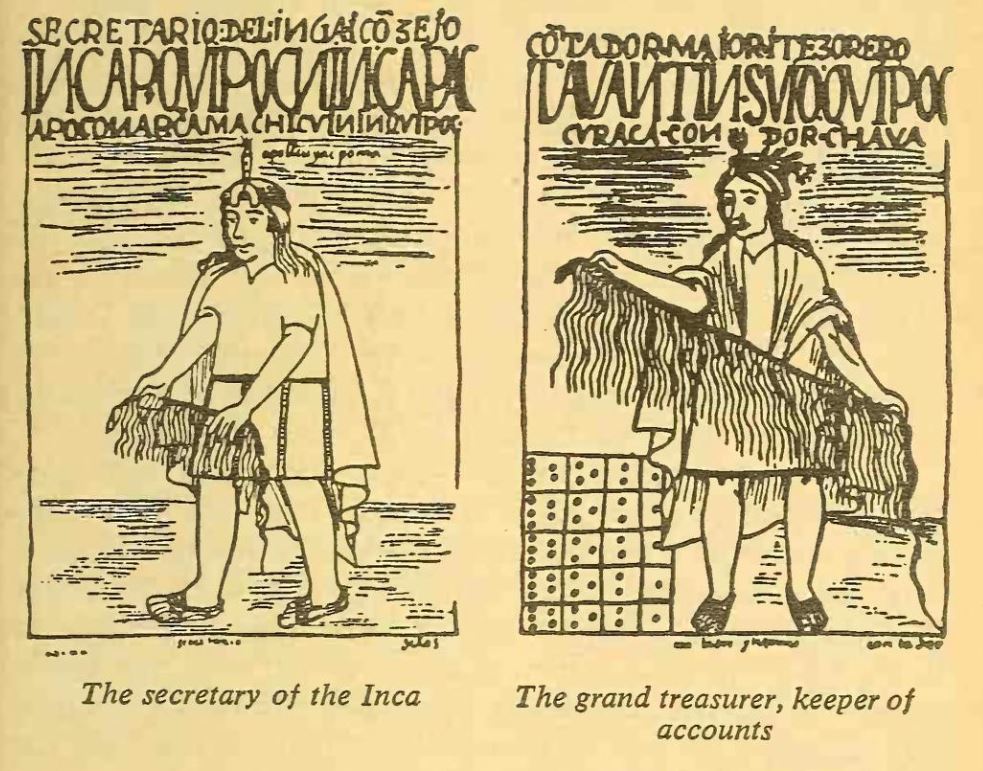
Garcilasso de la Vega, the son of a Spanish cavalier and an Inca princess named Chima Ocllo, spent his first twenty years among the Inca, absorbing their culture and traditions. He documented the quipu’s role in verifying tribute payments and possibly recording orders or historical data, offering a perspective based on personal experience. His works, cited from Spanish sources following the conquest, form one of five key bases for studying quipus.
Other sources include drawings of supposed quipus (some apocryphal, others lacking detail), specimens exhumed from Peruvian graves now in museum collections, modern quipus still in use, and statements from explorers and ethnologists since the conquest. The American Museum of Natural History holds an extensive collection from a Peruvian expedition, providing abundant facilities for detailed study. These sources highlight the quipu’s administrative role and its debated potential as a communication tool.
Quipu Case Study
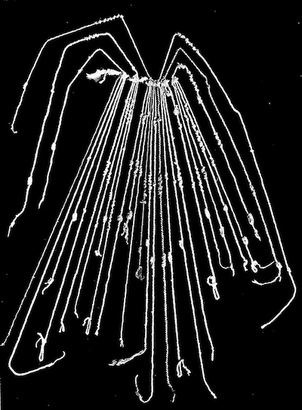
A notable example from the Bandelier collection, cataloged as No. B8713. This quipu likely recorded tribute data, showcasing distinct features. It employs long knots exclusively for units, with single knots representing higher orders like tens or hundreds. A top cord, threaded through the loops of grouped pendent cords, sums their values, providing a built-in check for accuracy. This specimen may document four types of objects over six periods, suggesting a structured approach to record-keeping.
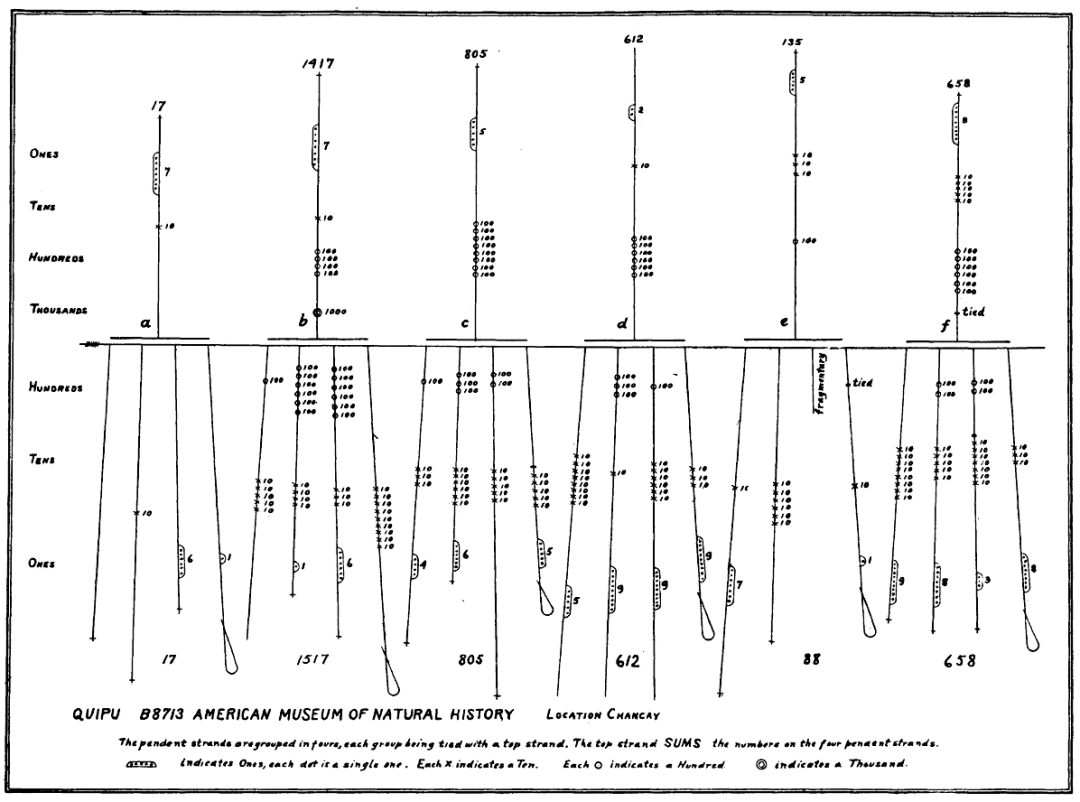
B8713 quipu’s colors appear chosen for convenience rather than strict symbolic meaning, challenging assumptions of a universal color-coding system. While some quipus used colors like red for war or yellow for gold, this example suggests flexibility in their application. Despite some degradation of the cords, the knot patterns remain legible, allowing researchers to reconstruct the numerical data encoded within.
Cultural and Mathematical Significance
The quipu reflects the Inca’s administrative and intellectual prowess, enabling governance without written language. Its decimal system, predating many Western notations, highlights practical mathematical sophistication. By encoding numerical data, the quipu managed vast datasets, from agricultural yields to labor obligations, across a sprawling empire. Claims of narrative use, such as conveying messages, suggest a broader cultural role, though archaeological evidence remains limited to numerical functions.
The quipu’s portability and durability made it ideal for administrative tasks, blending function with aesthetic elements like colored cords. It forms a chapter in the history of the abacus, a topic yet to be worthily treated, and reveals a civilization that thrived on precision. The possibility that quipus recorded messages adds intrigue, suggesting a multifaceted system with potential cultural depth.
Challenges in Understanding the Quipu
Interpreting quipus poses several challenges. The exact significance of colors remains debated, as their use may have varied by region or purpose. The arrangement of knots, their distances from the main cord, and the grouping of cords raise questions about whether these elements carried specific meanings or served as mnemonic aids, similar to rosary beads. Additionally, the absence of preserved “historical” quipus, if they existed, limits our understanding of their full range of applications.
The consistency of knot types (ten variations, including two forms for the single knot and eight long knots differing only in turns) suggests a standardized numerical system. Questions persist about whether the quipu recorded historical events beyond dates, the role of color schemes, and the significance of grouping or distances. Ongoing research into museum collections continues to refine our understanding of quipu functions.
Insights from the Harvard Khipu Databas
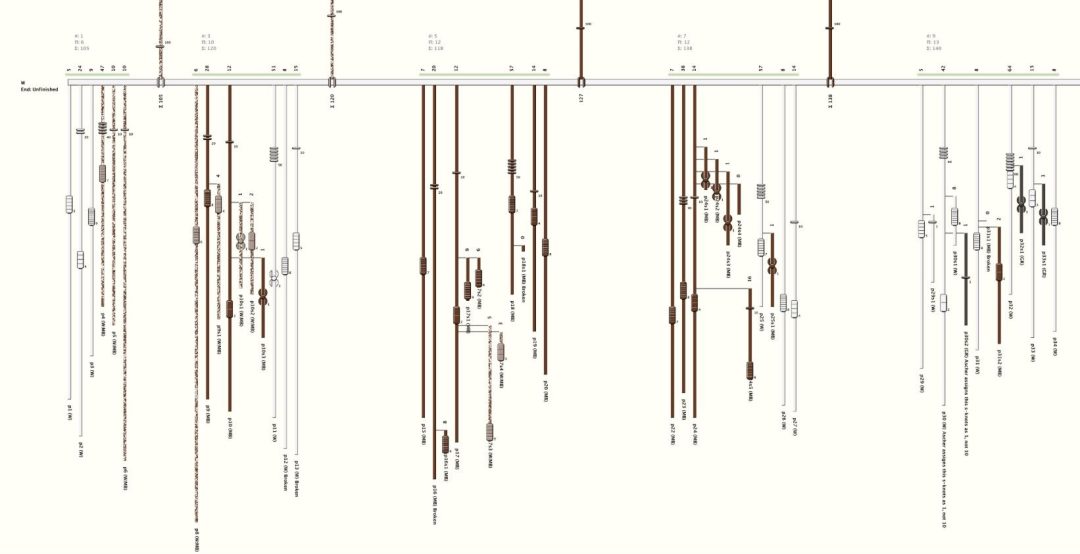
The Harvard Khipu Database, featuring over 900 quipus, provides new insights into their complexity. Detailed analysis breakdown intricate knot patterns, color sequences, and cord hierarchies. Scholars are analyzing these patterns to explore whether quipus encode more than numbers, potentially including calendars, genealogies, or narrative elements.
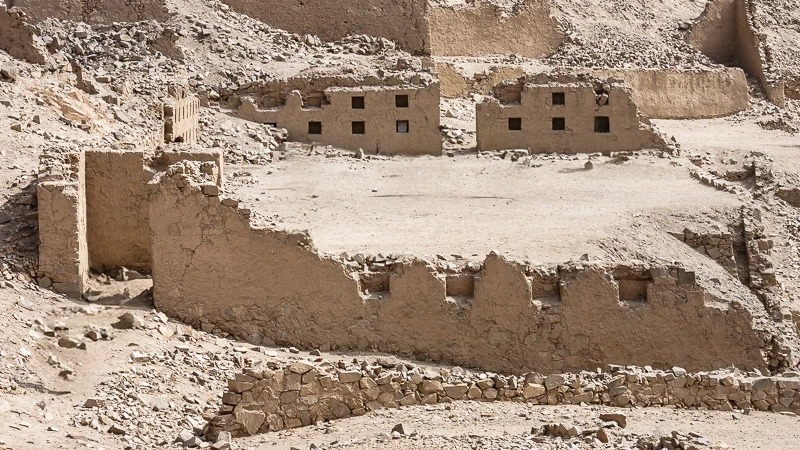
Researchers like Gary Urton suggest that recurring knot and color combinations may represent categorical data, such as resource types, administrative units, or sequential events. Sets with consistent structures, might track inventories or time-based records, while others, with five related cords, suggest relational data. Sabine Hyland’s study of Incahuasi quipus proposes that some cords could encode names or places, hinting at a semiotic system, possibly a proto-linguistic code. The use of multiple cord colors and knot groupings indicates a sophisticated data organization system, potentially involving combinatorial logic.
The database challenges earlier views of quipus as solely numerical. Several specimens highlight structural diversity, with some quipus showing complex hierarchies. However, no definitive evidence confirms narrative encoding, leaving these analyses as educated hypotheses. This work expands the quipu’s perceived role, suggesting a blend of practical mathematics and cultural communication, with ongoing studies promising further insights.
Legacy of the Quipu
The quipu remains a powerful symbol of Inca ingenuity, bridging the gap between ancient and modern record-keeping methods. Its decimal structure and numerical focus demonstrate a level of administrative complexity that rivals contemporary systems. By preserving data through knots, the Inca managed resources and governance with remarkable efficiency, leaving a legacy that continues to captivate historians and archaeologists.
Modern parallels to the quipu exist in Andean communities, where simplified versions are still used for local accounting. These contemporary practices, combined with archaeological evidence, affirm the quipu’s enduring relevance. As research progresses, each quipu uncovered offers a glimpse into the administrative heart of the Inca empire, revealing a civilization that thrived through precision and innovation.
Conclusion
The ancient quipu, with its knotted cords and decimal system, served as a cornerstone of Inca administration, recording numerical data like tributes and populations. Historical claims suggest it also encoded narrative content, such as messages or royal orders, with the Harvard Khipu Database proposing greater complexity through knot patterns and color sequences. Archaeological examples, like the Huando quipu, highlight its numerical precision, while expanded analyses invite further study of its potential communicative role. The quipu remains a testament to Inca ingenuity, blending mathematical and cultural significance in a system that continues to intrigue researchers.
Authors Notes:
The Quipu challenge preconceived notions regarding how we should look for mathematics and perhaps “writing”. Essentially we have a three dimensional object conveying information. Perhaps many cultures who didn’t have a so called “written record” have just been pigeon holed into a blind spot by our biases?
Sources:

